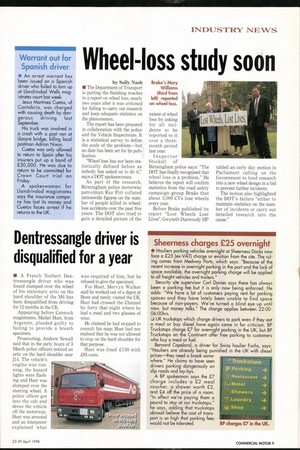Wheel-loss study soon by Sally Nash • The Department of
Page 7

If you've noticed an error in this article please click here to report it so we can fix it.
Transport is putting the finishing touches to a report on wheel loss, nearly two years after it was criticised for failing to carry out research and keep adequate statistics on the phenomenon.
The report has been prepared in collaboratior . with the police and the Vehicle Inspectorate. It is a statistical survey to define the scale of the problem—but no date has been set for its publication.
"Wheel loss has not been statistically defined before as nobody has asked us to do it," says a DOT spokeswoman.
As part of the research, Birmingham police motorway patrolman Ray Pitt collated nationwide figures on the number of people killed in wheelloss accidents over the past five years. The DOT also tried to gain a detailed picture of the extent of wheel loss by asking for all incidents to be reported to it over a threemonth period last year.
Inspector Stockall of Birmingham police says: "The DOT has finally recognised that wheel loss is a problem." He believes the report will confirm statistics from the road safety campaign group Brake that about 3,000 CVs lose wheels every year.
Before Brake published its report "Lost Wheels Lost Lives", Gwyneth Dunwoody MP tabled an early day motion in Parliament calling on the Government to fund research into a new wheel design in a bid to prevent further incidents.
The motion also highlighted the DOT's failure "either to maintain statistics on the number of incidents or carry out detailed research into the cause."










































































































